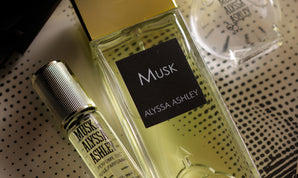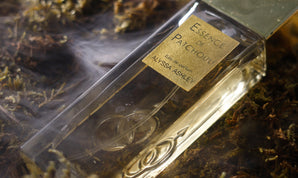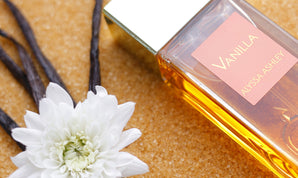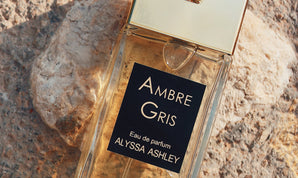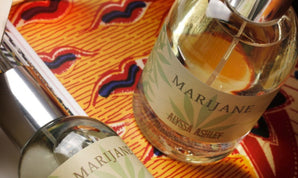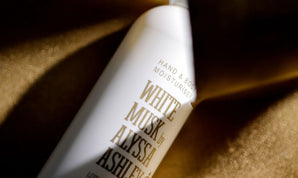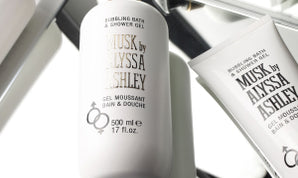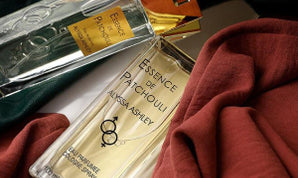"The stars are many, millions of millions".... this is part of a commercial song sung by adorable children that we all know and that, immediately transports us to a warm and festive atmosphere.
Star Anise Perfume
Among the stars in the sky and the colourful ones that decorate the streets of our cities and our homes, there is also one that is used in perfumery.
The star anise, a plant which (few people know) belongs to the fennel family, so much so that part of the olfactory profile of this material, although complex, reminds you of it.
Its wonderful fruits remind us of a starfish and create a fragrance with aromatic and medicinal facets.
To some it seems like the scent of anise or liquorice, to others it reminds them of the scent of parsley.
These similarities are not completely wrong, there is something common between the molecular constructions, besides having botanical relatives.
The extraction of star anise is done by steam distillation, however in order to obtain a fresher matter and one most similar to the plant, it’s done by CO2 extraction. The extraction of CO2 allows to obtain a bighter, more ‘modern’, end material.
However, with essential oils like this, we must be careful with anethole, which is a toxic component when present in high doses.
In order to extract these scents, the star is dried for a while, and only then we can proceed with the extraction of carbon dioxide.
The strange thing is that seeds found in star anise are not used to extract the raw material, it’s the pod that is fundamental, this is because its dried peel is rich in odorous molecules.
The marriage of star anise
It’s not rare to find this material mixed with amber accords, it gives it extra warmth and sweetness, perfect among spicy scents.
We talk about estragole, also present in tarragon, when we use only parts of an extraction from star anise, practically it’s a fractionate, a natural isolate.
Estragole reminds me of mint, it has tones of basil, it smells like a balsamic syrup.
It's a raw material that accompanies and enhances, when needed, an ylang ylang and enriches scents from the fougeres olfactory family.
Green perfumes: Pine and fir
There is no star without fir, in perfumery what raw material could we use?
Easy, the prince of the forest, the common fir.
This is a powerful raw material, with a very recognizable aroma, to be used with extreme caution because it is quite exhibitionist and tends to cover everything in front of it.
As a matter of fact, after the aging of an ingredient list (if well made, it lasts about three/four weeks), it can be discovered that the final result substantially smells like pine.
Even the colour, which is deep green, must be well dosed because it tints everything, moreover the consistency of the raw material is pasty, and therefore not easy to work with. (To alleviate the color problem, a treated and "bleached" component could be used. Maybe we'll talk about this in more technical discussions later...)
Pine remains a particularly useful element in winter scent compositions and for recreating enchanted places and storybook landscapes that never cease to amaze young and old alike.
In colonies it is essential, but it is also an extraordinary material among the powdery facets, few would bet on it, we can say it is an unexpected matter which reveals great surprises.
Scent of fir: the best combinations
When you smell lily of the valley reconstructions, fir is the most similar and goes well with flowers such as jasmine and carnation.
Scent of Scots Pine: the plant
Scots Pine is another tree for our star. Attention! This is not the famous brand with the white horse, protagonist of the 70's Carousels, but an absolute of pine obtained from the tree whose botanical etymology is Pinus Sylvestris.
The raw material is a cascade of sweet resins, it is rich, deep, wonderfully warm. Personally, it is one of the components of perfumery that enraptures me in a particular way and when I put it under my nose it opens the airways: well-being assured.
Pine absolute is the perfect translation of a walk through woods and golden valleys, it is extracted with a solvent and also in this case the color is green, to allow an easy processing in the formula its consistency must be modulated.
Superlative raw material with fresh flowers and herbal clusters, it's great company between the lavender, galbanum and herbaceous notes.
Try a green accord with and without this absolute, sparkling chimes and flashes of light will confirm how magical it is.
It is a precious raw material in briefs where it is required to represent the Mediterranean maquis, when the air is saturated with aromas and the musical background is that of cicadas singing.
The scent is pure poetry.
